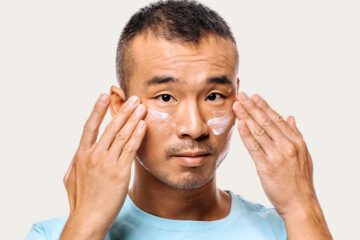Introduction
Hair oils are not just for the lengths and ends of your hair; they play a crucial role in maintaining a healthy scalp. A well-nourished scalp is the foundation for healthy hair growth. This guide explores the profound benefits of hair oil for scalp health, detailing which oils to use, how to apply them, and the resulting improvements you can expect in both scalp vitality and hair quality.
The Importance of Scalp Care in Hair Health
A healthy scalp is vital for the growth of strong, vibrant hair. Just as soil must be fertile to grow robust plants, your scalp needs to be in prime condition to support hair growth. Hair oils can moisturize and protect the scalp, balancing oil production, and eliminating issues such as dandruff and dermatitis.
Key Benefits of Hair Oil for Scalp Health
Moisturization and Hydration
Hair oils are excellent at sealing moisture into the scalp, preventing dryness and flakiness. Oils like coconut and olive are particularly effective, as they deeply penetrate the skin to deliver hydration where it’s most needed.
Balancing Scalp Oil Production
Oils can surprisingly help regulate your scalp’s natural oil production. Jojoba oil, for example, mimics the natural oils of the scalp, helping to balance sebum levels without overstimulating oil production. This makes it ideal for both oily and dry scalp conditions.
How to Choose the Right Hair Oil for Your Scalp
Choosing the correct oil is crucial, as different oils offer varying benefits:
For Dry Scalps
If you suffer from a dry scalp, look for oils rich in oleic acid and vitamin E, like olive oil or argan oil. These oils provide intense moisture and have anti-inflammatory properties to soothe irritation.
For Oily Scalps
For those with oily scalps, lighter oils that won’t clog pores or exacerbate oil production are preferable. Jojoba and grapeseed oils are excellent choices as they help to normalize sebum production.
Effective Application Techniques for Scalp Nourishment
Applying hair oil to the scalp requires careful technique to ensure proper absorption and maximum benefits:
- Preparation: Warm the oil slightly to enhance penetration. Ensure it’s warm, not hot, to avoid scalp irritation.
- Application: Massage the oil into your scalp using your fingertips. Use circular motions to improve blood flow and nutrient delivery to hair follicles.
- Duration: For best results, leave the oil on your scalp for at least 20-30 minutes. For an intensive treatment, consider leaving it overnight.
DIY Scalp Nourishing Hair Oil Blends
Creating your own hair oil blend allows you to address your specific scalp needs directly. Here are a couple of recipes:
Hydrating Blend for Dry Scalp
- Mix 2 tablespoons of coconut oil with 1 tablespoon of argan oil.
- Add 5 drops of tea tree oil for its antifungal properties, which help combat dandruff.
Regulating Blend for Oily Scalp
- Combine 2 tablespoons of jojoba oil with 1 tablespoon of grapeseed oil.
- Add a few drops of lavender oil for its soothing and antimicrobial effects.
Conclusion
Nourishing your scalp with hair oil is a crucial step towards achieving healthy, beautiful hair. By understanding which oils benefit different scalp types and applying them effectively, you can significantly improve your scalp health. This not only enhances hair growth and strength but also leaves your hair looking vibrant and full of life. Start incorporating these practices into your hair care routine and watch your hair, and scalp health transform.
Stay in touch to get more updates & news on Gossips!




